Connect with Mi'kmaw culture
Visit Parks Canada-administered places in Mainland Nova Scotia and discover Mi'kmaw culture, traditions, and language, 4,000 years in the making.
Places to visit
In Halifax: Halifax Citadel National Historic Site | Georges Island National Historic Site
In Annapolis Valley: Grand-Pré National Historic Site
In Southwest Nova Scotia: Fort Anne National Historic Site | Port-Royal National Historic Site | Kejimkujik National Park and National Historic Site
Offshore: Sable Island National Park Reserve
In Halifax
Halifax Citadel National Historic Site
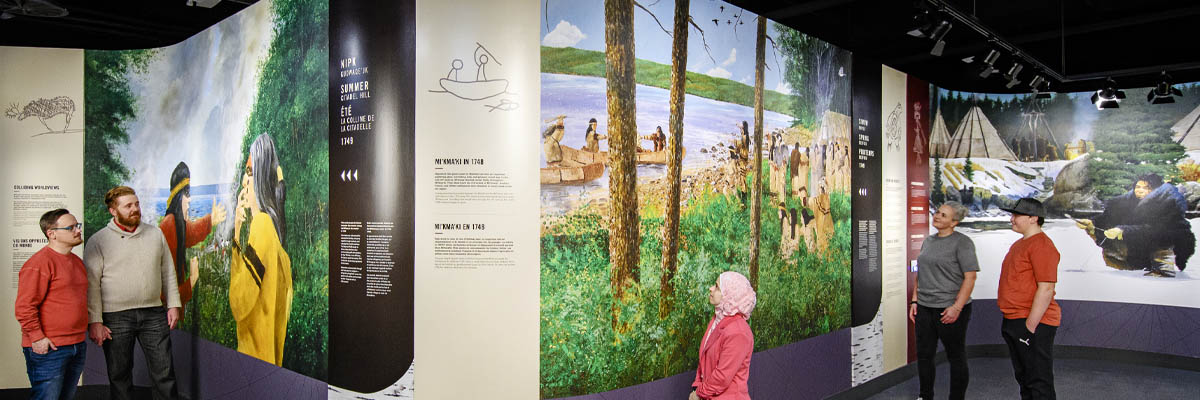
Visit the newest exhibit, Fortress Halifax, A City Shaped by Conflict, and view artwork by renowned local Mi’kmaw artist, Leonard Paul, depicting Kjipuktuk, or “The Great Harbour” and Mi’kma’ki.
Hear Mi'kmaq voices, listen to diverse stories, and learn about the resilience of the Mi’kmaq.
Georges Island National Historic Site
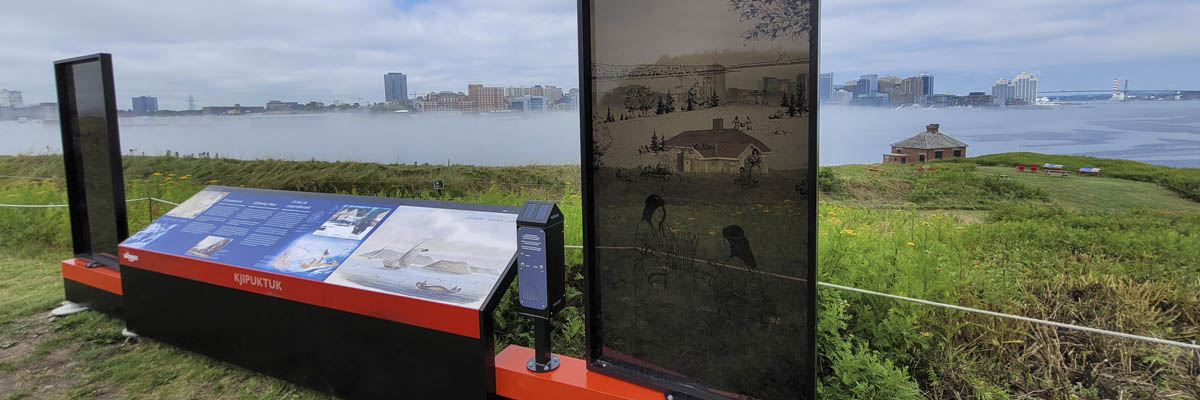
The Mi’kmaq were the first people to live in Kjipuktuk, more than 10,000 years ago. Georges Island was called Elpaqkwitk, “water splashed on it by the waves”.
The island was a key gathering place, harvesting area, and travel way for the Mi’kmaq before Europeans arrived, and long afterwards.
Visitors to Georges Island National Historic Site must purchase boat transportation with Ambassatours Gray Line. Call 902-420-1015 or drop by the ticket kiosk at Cable Wharf.
In Annapolis Valley
Grand-Pré National Historic Site
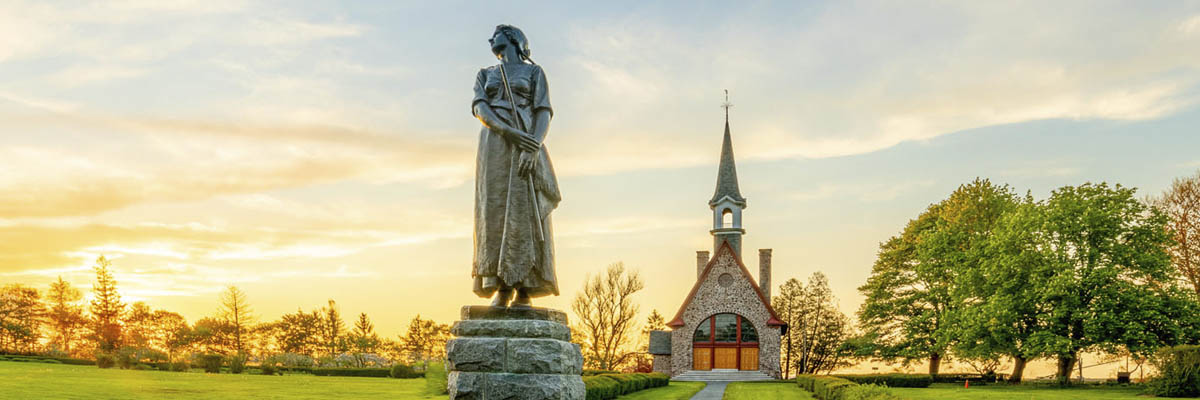
Located in the heart of a UNESCO World Heritage Site, the picturesque grounds are a monument to Acadian culture and a commemoration of the deportation of thousands of Acadians.
The Acadians and the Mi’kmaq had a very peaceful relationship, forging a close bond of co-operation that continues to be celebrated to this day.
In Southwest Nova Scotia
Port-Royal National Historic Site
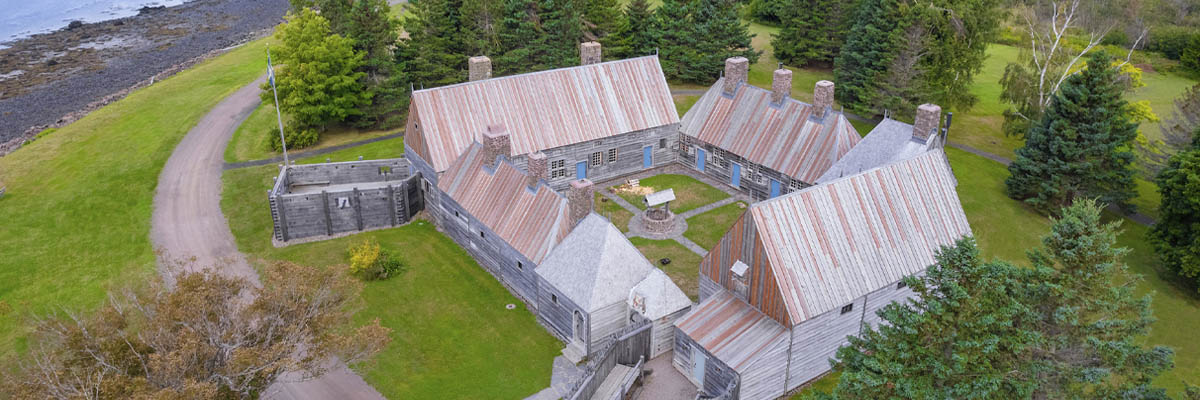
Seasonal contact and trade between the Mi’kmaq and Europeans was established long before the French arrived in Port-Royal in 1605.
Merbertou, Mi’kmaw grand chief of the region, played a key role in forging a strong alliance and friendship between the Mi’kmaq and the French.
Fort Anne National Historic Site
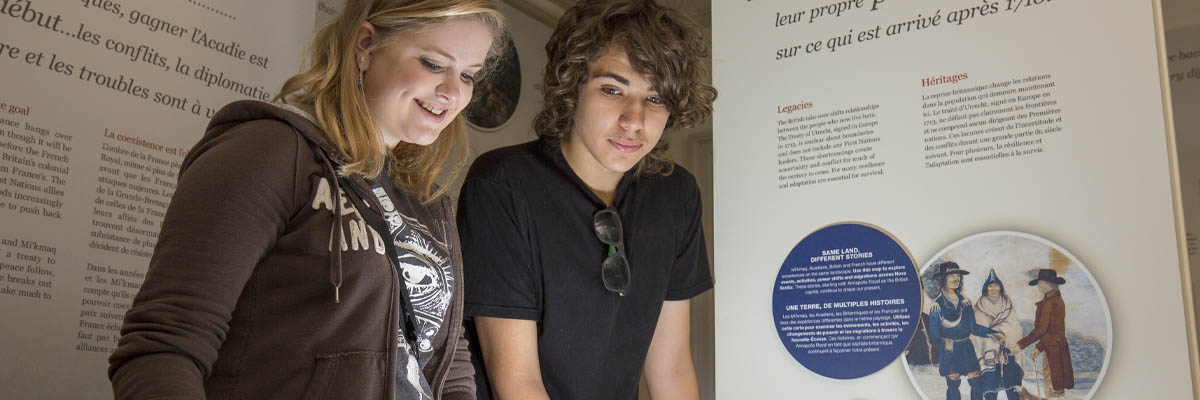
Nme’juaqnek was an important fishing area and a central gathering place for the Mi’kmaq.
Interact with the Treaty Table to understand why we are all Treaty People. Visit the Tapestry room and admire the painting ‘Our People’ depicting Mi’kmaw presence since time immemorial.
Kejimkujik National Park and National Historic Site
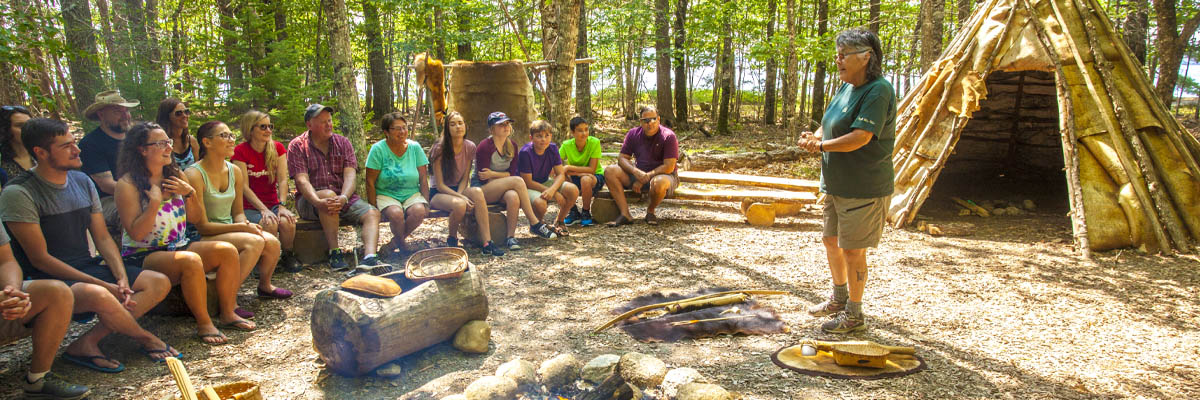
Preserving and presenting a unique cultural landscape, Kejimkujik celebrates the presence of the Mi’kmaq through sharing the stories of their ancestors and history.
Experience guided Mi’kmaw cultural programs including petroglyph tours, paddling ancestral waterways, Wejisqalia’ti’k Mi’kmaw encampments, and birch bark canoe-building with master Mi’kmaw craftsman, Todd Labrador. The canoe is an iconic symbol of the Mi’kmaw cultural landscape and a great way to experience Kejimkujik.
Offshore
Sable Island National Park Reserve

Sable Island is a thin crescent of shifting sand located at the edge of the Continental Shelf, 290 km southeast of Halifax, Nova Scotia. Home to the famous Sable Island wild horses, grey seals, and unique plants, birds, and insects.
Take the Mi’kma’ki Sable Island Pledge, created by Mi’kmaq Youth and Elders for all future visitors to use as guiding principles for their visit to this protected Mi’kmaw land.

Discovery Pass: access to multiple locations
Save time at the gate. An annual Parks Canada Discovery Pass covers admission to more than 80 destinations for 12 months.
- Date modified :